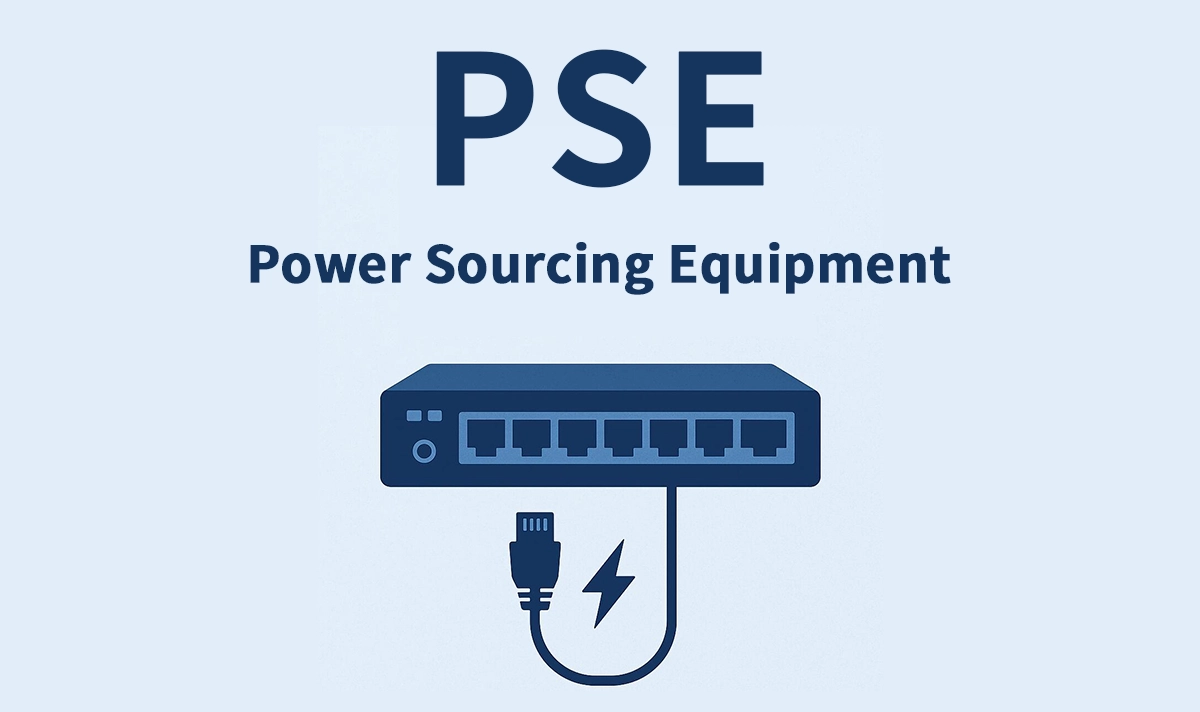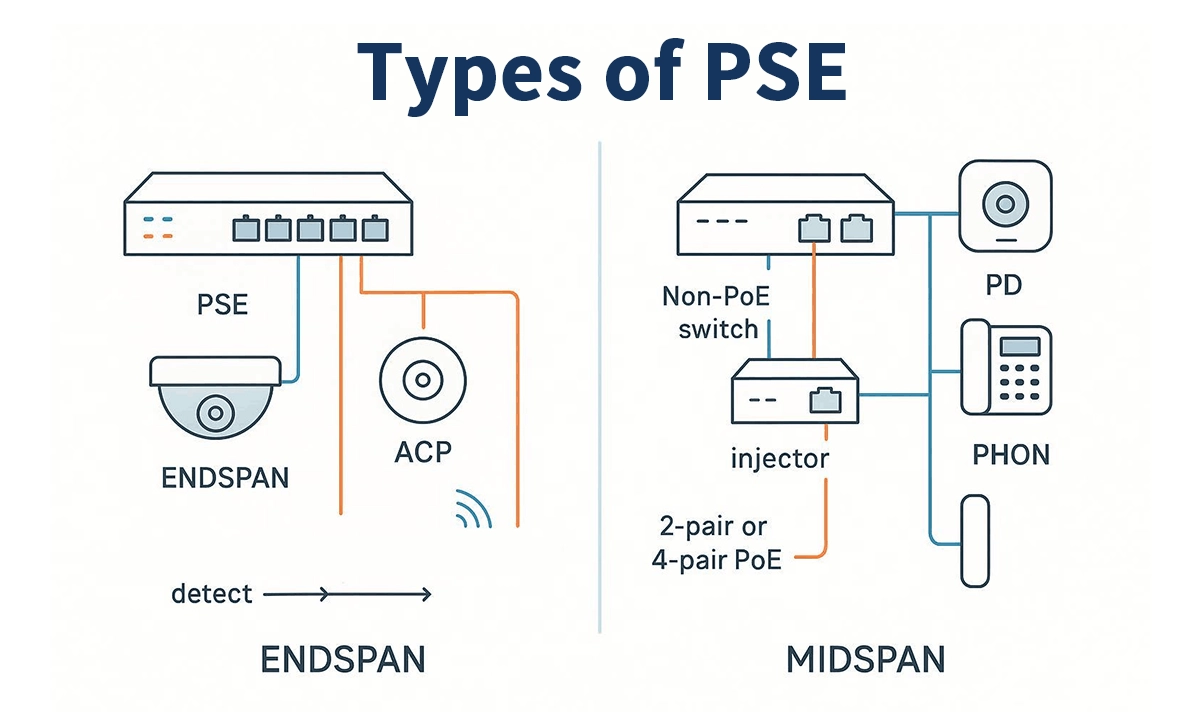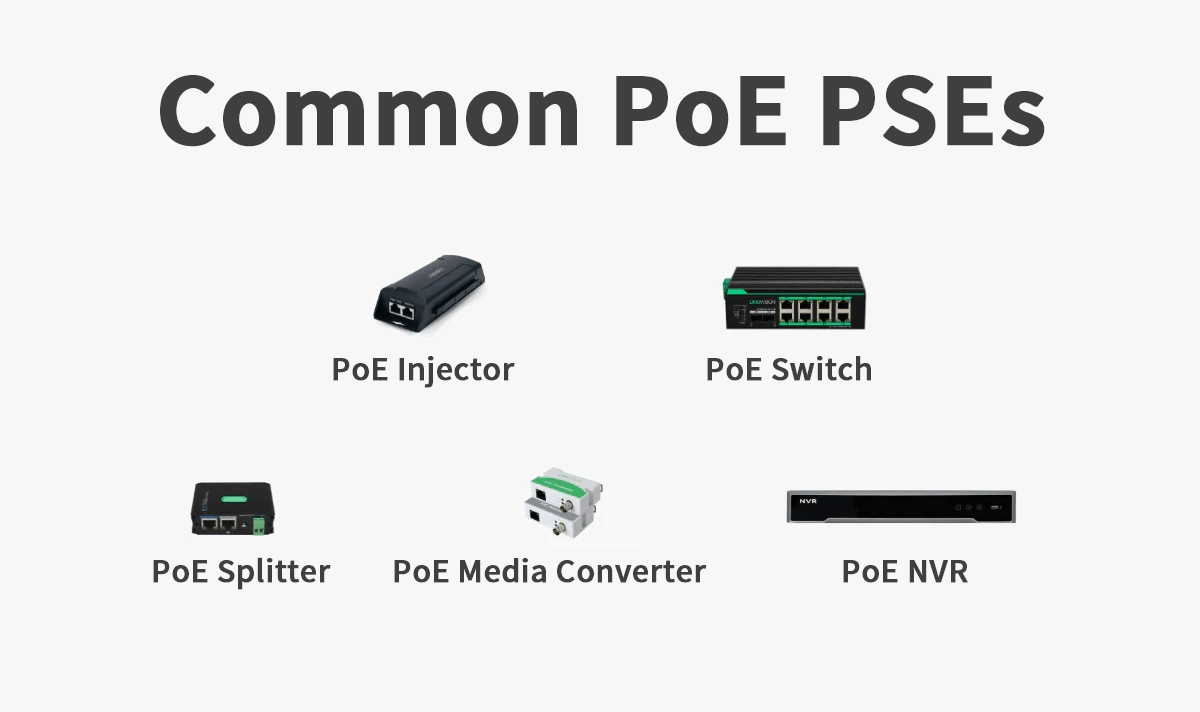
Power Sourcing Equipment (PSE) is the device that supplies DC power over Ethernet cabling to a Powered Device (PD) within the IEEE 802.3 Power over Ethernet (PoE) ecosystem. In other words, PSE is the PoE power-supplying side (the switch or injector that provides power), and PD is the powered endpoint (for example, an IP camera or access point).
Power Sourcing Equipment (PSE) is the power-supplying side of a Power over Ethernet (PoE) system. It delivers DC power and data simultaneously over standard Ethernet cables—typically through RJ45 connectors. This technology eliminates the need for separate power lines, simplifying installation and reducing costs in enterprise, industrial, and IoT applications.
In a PoE (Power over Ethernet) setup, the PSE (Power Sourcing Equipment) transmits power to a Powered Device (PD)—such as an IP camera, wireless access point (WAP), or VoIP phone—through the same network cable used for data transfer.
➡️ Definition of PSE
A PSE (Power Sourcing Equipment) is any network device capable of supplying electrical power through Ethernet cables to PDs that support PoE functionality. It injects power onto the twisted pairs of the Ethernet cable while maintaining data communication integrity.
In other words, the PSE is the “power provider,” while the PD is the “power receiver.”
➡️ Types of PSE
There are two main types of Power Sourcing Equipment, depending on their position in the network:

Type | Typical Devices | Key Features |
|---|---|---|
Endspan PSE | PoE Switch | Provides power and data directly from Ethernet ports—no additional injector needed. |
Midspan PSE | PoE Injector | Installed between a non-PoE switch and the PD; supplies only power, not data. |
Both types are essential for extending PoE capabilities to a wide range of network infrastructures, from legacy systems to modern enterprise deployments.
➡️ How PSE Works
A PSE operates through several precise stages to ensure safe and reliable power delivery:
Detection – Identifies whether the connected device is a valid PoE-compatible PD.
Classification – Determines the PD’s power class (e.g., Class 0–8).
Power Delivery – Injects DC voltage via Mode A or Mode B wire pairs.
Maintenance – Monitors current flow and voltage stability during operation.
Disconnection – Automatically cuts power when the PD is removed or a fault is detected.
This intelligent process ensures both equipment safety and network reliability.
➡️ PSE and IEEE PoE Standards
IEEE standards define the output power levels of PSE devices. Each version expands the available power budget and device compatibility:
PoE Standard | Maximum Power (at PSE) | Common Applications |
|---|---|---|
15.4 W | IP phones, entry-level access points, and cameras | |
30 W | Dual-band access points, video devices | |
60 W (Type 3) / 90–100 W (Type 4) | Industrial gateways, high-power APs, displays |
As PoE standards evolve, PSE technology continues to enable higher-power and more energy-efficient network devices.

➡️ Applications of PSE
Power Sourcing Equipment plays a vital role across modern networking environments:
PoE Switches – Deliver power and data to WAPs, IP cameras, and VoIP phones.
Industrial Networks – Power sensors, controllers, and automation gateways.
Smart Buildings & IoT – Simplify wiring, reduce power infrastructure, and enhance device flexibility.
Surveillance Systems – Support large deployments of PoE cameras with centralized power management.
➡️ Related Terms
Term | Full Name | Function |
|---|---|---|
PSE | Power Sourcing Equipment | Supplies electrical power via Ethernet. |
PD | Powered Device | Receives power and data from the PSE. |
PoE | Technology that enables power and data transmission over one cable. |
➡️ Conclusion
Power Sourcing Equipment (PSE) is the foundation of every PoE network, enabling safe and efficient power delivery through Ethernet infrastructure. Understanding how PSE works—and selecting high-quality PoE components—ensures network reliability, scalability, and performance.
If you are developing or upgrading PoE-enabled devices, explore LINK-PP’s portfolio of PoE-compatible magnetic RJ45 connectors.
For instance, the LPJK6072AONL PoE RJ45 connector integrates magnetic components and supports the IEEE 802.3af (PoE) standard. It ensures stable power transmission and superior EMI performance in compact PoE switches and injectors.


